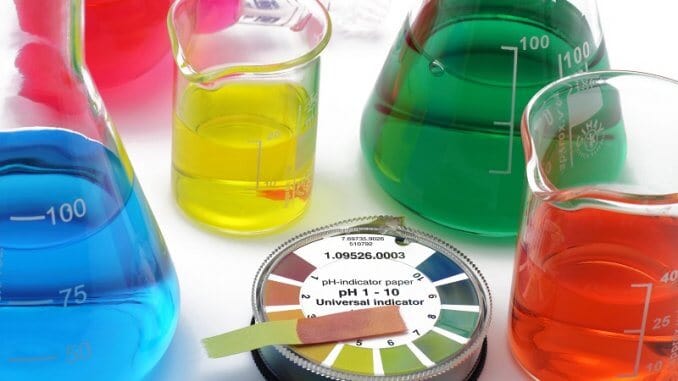
Being able to raise the pH of your fish tank is an important skill to have. It can come in handy in a few different ways.
Perhaps you are trying to make your water conditions perfect before adding your first fish? Or maybe you have noticed a pH drop in your established tank and need to rectify it?
If pH is controlled well, your fish will be happy in your aquarium for years. If you make a mistake, you may lose them early on.
pH usually remains relatively stable, but if problems arise, you need to be able to fix them before they affect your fish. This article will help you with that.
We will explain many ways to help you raise your aquarium’s pH. We will also cover other important aspects, such as what pH is, how to test it, and what your pH should be.
Read Article: The Complete Guide to Aquarium Plants eBook
What is pH?
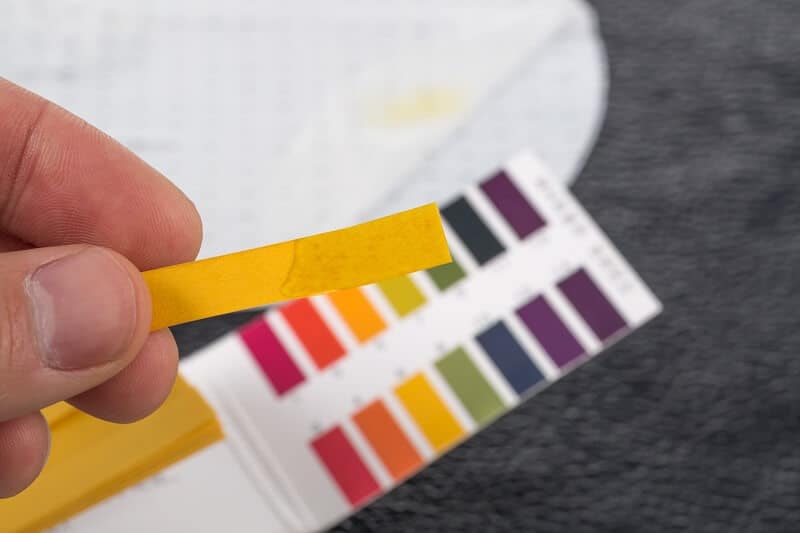 A pH value shows you the concentration of hydrogen ions in a water-based solution. More simply put, it tells you how acidic or alkaline (basic) the water in your tank is.
A pH value shows you the concentration of hydrogen ions in a water-based solution. More simply put, it tells you how acidic or alkaline (basic) the water in your tank is.
In 1909, Søren Peter Lauritz Sørensen (a Danish biochemist) described the following equation which has been used to calculate pH ever since (though there are some variations):
pH=-log[H+]
This is a little complicated, but luckily you don’t need to remember it. You can buy testing kits from pet stores that will work out your aquarium’s pH for you. Some stores even offer to test your water for free, if you bring in a sample.
What you do need to remember is the pH scale, as this is what you will refer to when your pH has been determined.
The scale usually spans from 0 to 14. If the pH is less than 7, it’s acidic. If the pH is over 7, then it’s alkaline. A pH of exactly 7 is referred to as being “neutral”.
You can get negative values if the liquid is extremely acidic. Likewise, values can exceed 14 if they are extremely alkaline. You won’t encounter these situations while fishkeeping though.
Some liquids do not have a pH, such as vegetable oil or gasoline. The liquid must contain water to have a pH value.
Why is pH Important?
Knowing pH is important for many everyday uses. Cooking, water purification, food preservation, and medicine are just a few. It is also crucial in the world of fishkeeping.
In the same way that you would use a heater to control the temperature of the water, you need to control the pH. The reason for doing so is the same as well, it is all to do with the preferences of your fish.
One species may prefer a different pH range to another. This can usually be based on the natural habitat of populations found in the wild.
Some species have been selectively bred to the point where they have different preferences from their natural counterparts.
If the pH levels in your tank are not suitable, it can be fatal for your fish. A low pH can effectively burn their skin. A poor pH is poisonous and will lead to health problems.
This is the same for other parameters. For example, a temperature drop can weaken a fish’s immune system.
A change in pH can also help pathogens to thrive. This makes disease another problem for you to deal with.
Testing the conditions of the water in your aquarium each week will help you to spot changes in pH quickly, to reduce the chance of fatalities.
How to Check the pH of Your Aquarium
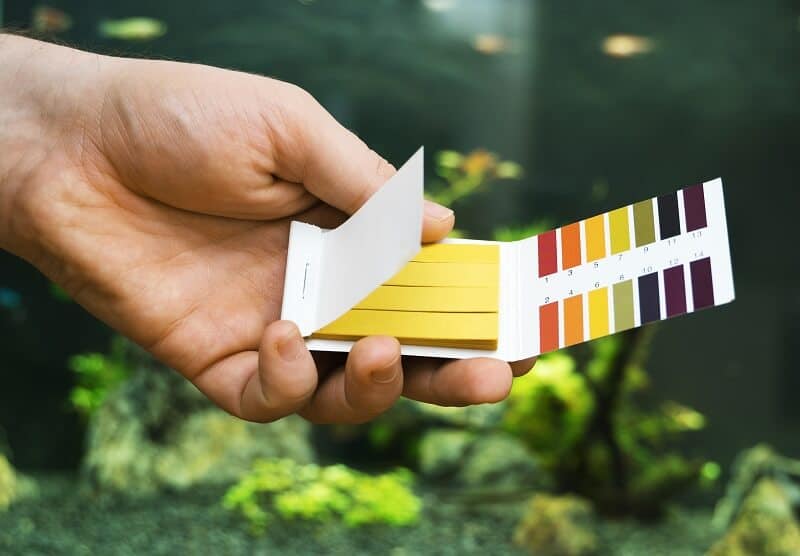
You do not need to do any complicated math or science, you just need to buy yourself a pH testing kit.
Most pet stores will sell these, but you can look around online if you cannot find any. Their price may vary dramatically depending on the brand and type, but most are inexpensive.
If you don’t want to hand over any money, some stores will test your water for you for free. You must bring them in a sample though. This takes time and makes it difficult to test your water every week, so isn’t a long-term solution.
The most expensive pH testers are digital, but they are the most convenient to use. You just have to dip the end in the water and the pH value will appear on the digital display.
More commonly used, and much cheaper, are manual testing kits.
You can buy test strips made from dyed litmus paper. Dipping these in water will cause them to change color. Compare this color with the provided color-coded chart to determine pH.
Most test strips will check multiple parameters in one dip, like nitrites, nitrates, carbonates, and hardness.
Some manual test kits require you to mix a sample of your water in a chemical solution that changes color, which is a little less convenient.
Once you run out of strips or chemical solution, you will have to buy more. A digital tester will work indefinitely unless it malfunctions. Each method is effective, the one you choose will likely depend on price.
What pH Should Your Aquarium Be?
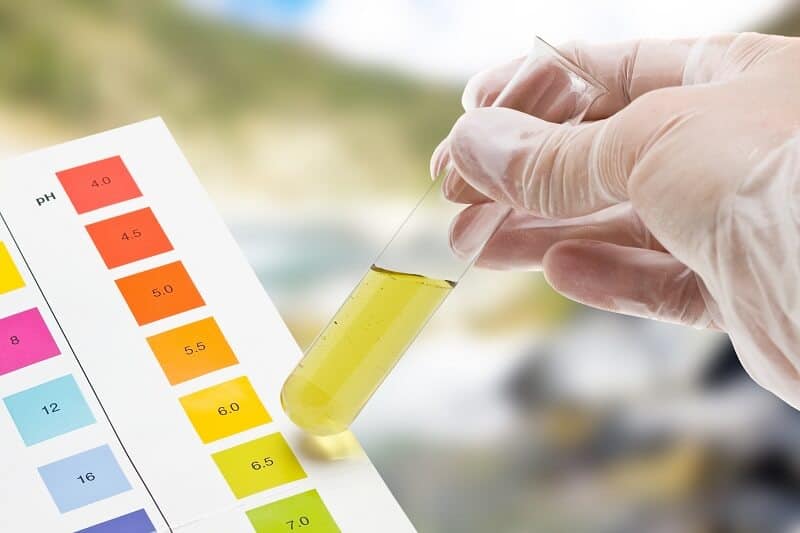
The pH of your tank will depend on the species of fish that you keep. When designing their perfect aquarium, your job is to recreate their natural habitat as best as you can. This includes pH.
It is easy to find out the preferences of your fish if you’re unsure. We recommend an ideal pH on our various species care guides.
It will also be mentioned in fishkeeping books, or you could ask staff in pet stores.
You might notice that each type of fish tank tends to have a different pH. Tropical tanks are usually between 6 and 7.5, while marine tanks are around 7.5 to 8.5, with reef tanks being at the higher end of this range.
There are many exceptions to this though, which is why it is always safest to check the specific needs of your fish.
For example, African Cichlids prefer more alkaline conditions than most tropical fish. Some are kept at a pH of up to 8.5.
Remember to check that your pH is suitable for any other life in your aquarium, such as plants or invertebrates.
What Can Affect the pH of Your Aquarium?
Sometimes pH is beyond your control. It may get higher or lower due to a variety or reasons. Be aware of the following situations and fix your pH if you notice a change.
When your set up a new tank, you must cycle it to grow beneficial bacteria populations. The process is called the nitrogen cycle, which can make your tank more acidic.
During a fishless cycle (recommended), your fish aren’t added until the nitrogen cycle is complete, so it shouldn’t be a problem.
Occasionally the cycle can be unintentionally triggered a second time though, so the changing pH could then harm your fish.
Tannic acid can also lower pH. This is a result of introducing tannins associated with certain decorations, such as bogwood and peat moss.
Be careful when adding these types of thing, only do so if you are prepared for a drop in pH. Introducing tannins can be a good method for lowering your pH if it ever gets too high.
Tap water is treated using a range of chemicals to make it safe for humans to drink. These chemicals influence the water’s pH too.
The chemicals used can vary in different locations, so if you change the source of your water (perhaps by moving to a new house), your aquarium’s pH could be affected.
How to Raise pH
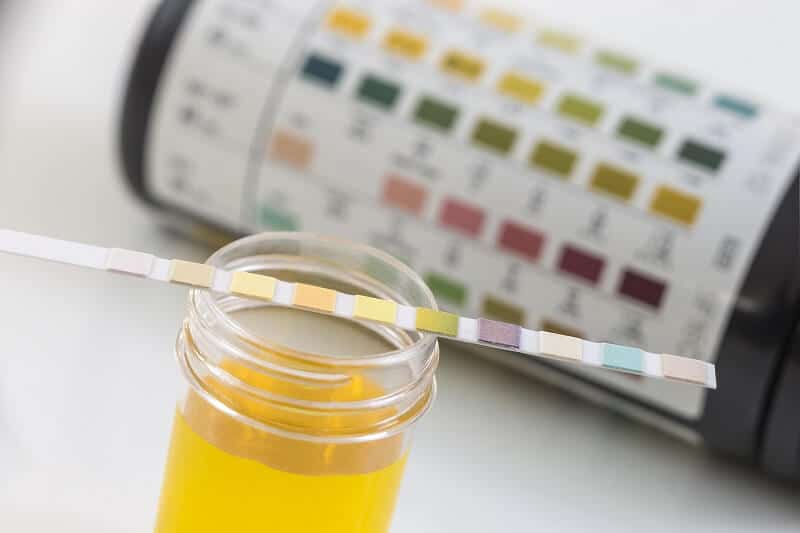
A drop in pH can be a big problem, but don’t worry, there are many solutions for you to try. Read through the following ideas and decide which is the best course of action for your situation.
Aerating the Water
Increasing the concentration of dissolved oxygen in the water will raise pH. This is because you will be lowering the concentration of carbon dioxide.
Carbon dioxide is acidic and produces carbonic acid when dissolved in water. A high concentration of carbonic acid can lower pH significantly.
There are a few ways to oxygenate your water.
The simplest way is to place your filter outlet above the surface of the water. This will disturb the water, which aids the movement of oxygen from the air.
A stronger effect can be created with air/water pumps. These increase aquarium currents, which also help air to move into the water. Check that your fish don’t mind strong currents though.
Regular water changes will keep oxygen levels high too.
Water Changes
An aquarium’s pH can gradually lower as pollutants build up. Pollutants are released in various ways, such as fish waste or decaying food.
Removing these pollutants will help to bring the pH back to its natural level.
Every 2-3 weeks, remove 20% of the water in your tank and replace it with tap water (after treating it with dechlorinator).
Changing small amounts of water regularly is safer than changing large amounts less often, as this could shock your fish.
You should be performing water changes anyway, as general care and maintenance of your aquarium.
Baking Soda and Chemicals
Baking soda, usually found in the kitchen, will raise pH. Adding a small amount in will produce quick results, but you must do this regularly or the pH will fall back to its original value.
Do not add too much baking soda in one go, if the pH rises too high or too quickly, your fish may suffer.
The general rule of thumb is 1 teaspoon per 5 gallons, but the slower you go, the safer your fish will be.
There are chemical that you can by which are intended to work in a similar way to baking soda. Using these is risky because it can be difficult to maintain a consistent pH.
Change Your Substrate
There are a few pH-raising materials that are easy to find and add into your aquarium. This will work in a similar way to adding tannins to lower pH.
The best choices include crushed coral, limestone, petrified coral, and certain shells. These are common in African Cichlid tanks which are known to have a higher pH than most.
Check the pH regularly after you add them, your pH could easily go higher than intended.
If you want to hide these materials, you could incorporate them into your filter.
Boil Driftwood
If you have any driftwood/bogwood in your aquarium, it may be releasing tannins and tannic acid, which lowers pH.
The easiest way to solve the issue is to remove the driftwood. If you are determined to keep it in your setup, you could try boiling it. Doing this regularly will kill any problematic bacteria.
Be aware that other materials can release tannins too, such as peat moss.
Summary
Everyone experiences a few setbacks while caring for fish. Some people must deal with disease, others must separate aggressive tank mates.
If you happen to have trouble with pH, you should now feel much more confident about how to deal with it. You don’t need to panic, there are lots of options available.
It is important that the pH matches the preferences of your fish, but it is also important that the pH remains stable.
By trying one or more of the suggestions above, your pH should be back to normal in no time.
Are you experiencing problems with your pH? Feel free to ask us about it in the comments below…

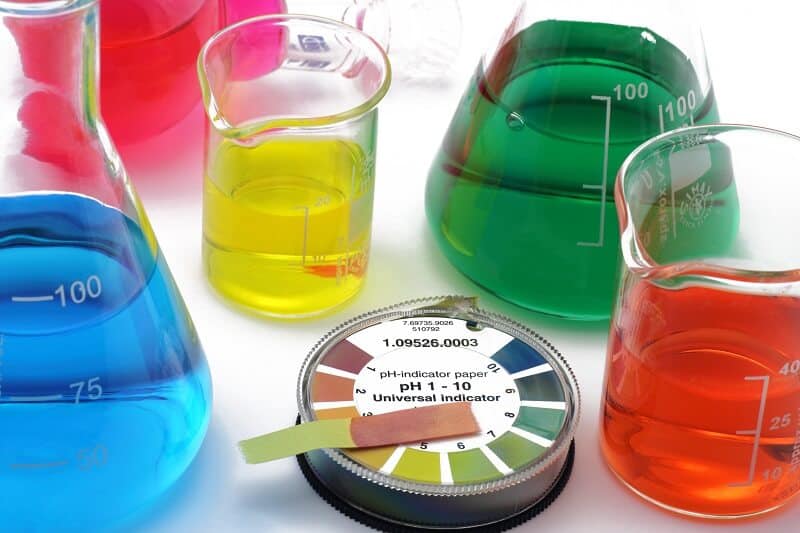
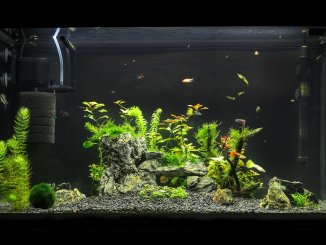
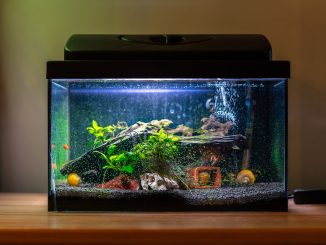
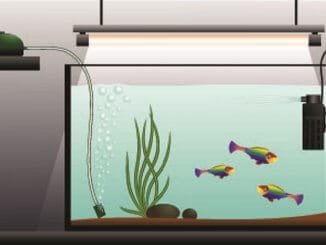
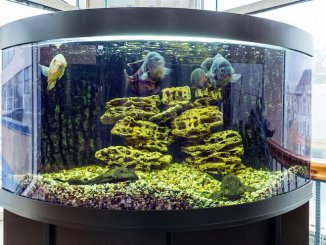
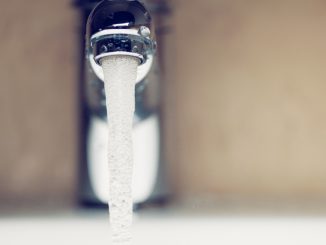
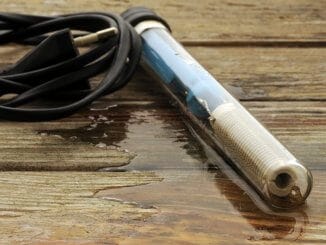
hello Sir,
I Had Problem with my Discus Bredding tank, water ph level
my tap Water ph is below 4.5
So how Can i Maintain ph level 5.5 or 6.0
Any Suggestions pls tell mi
wing ur rpl
Thanks & Regards
Vishal
Thank you for this article my daughter hasn’t a goldfish we have had him for 13 years he now has Popeye his eyes are cloudy and now have a clear bubble over them we been trying to keep the ph high but everyday it seems back to the yellow color and it says it has to be blue we have him salt baths what else can we do for him we’re tryinv to save him from going blind since it’s outnumbered fault we didn’t know about ph levels
Hi, I have a established tropical fish tank and have had it for years, but my ph is low and it won’t go up I’ve tried adding pH up but no luck, I have live plant’s that are on bogwood so wasn’t sure if this was affected by it. Please help.
Hi I have 2 weeks ago set up a planted tank with bogwood and plants my ph is 6.2 ish I have just put 3 corys in it and one platy I live on coast it’s a 2 ft tank but o don’t want to remove bogwood it looks great can I use sea shells to higher ph or quicker to buy crushed coral and can I reuse this once ph is stable
I have a 125gal. That I have had some very good results breeding Angelfish and a few other live born species, that being said I’ve accused of GETTING IN MY WATER TO MUCH and because of my memory issue I forget things like what the PH value has been. I write every test result down and the tank that has typically ran 7.8 – 8.2 and had currently purchased some peat some almond leaves to reduce pH or maintain and the PH amongst other things. Don’t know what changed in the tank but for the last month I suspected I had parisite issues or based on tech video information signs turned from sick to dead in days. I was treating the tank now with Prazipro and maintaining the PH which stayed around 7.8-8.0 as of 5 days ago was my most recent results today the PH results on two API 5 in one strip tests back to back 6.0. I have an FX6 was doing water changes per the process per medicine, yet no reason I know of, I’m just a fish hobbyist for a lot of years yet both the Parasite issues and then this sudden drop in PH are first time water problem. The information provided here will thanks for sharing. I really want to find out the cause for -2.8 drop in the 5 days since last test. The nitrites were 0.0-.5 nitrates were 100ppm another value that I was going to manage/lower prior to deciding to treat tank. Hardness has been 150+ since it cycled
Any advice on how to keep it from happening again and what anyone suspects caused these issues will be awesome lol and written down even. Thanks for your time and info
John
Hi
I have bought some African lake mineral salts to boost the ph of my malawi tank. The tank is currently reading 6.5 ph. I am going to do a water change in the next week and was wondering how I should introduce the salts? The instructions say to mix a 100g per 200 litres of water in a bucket and introduce to the tank. My tank is 500 litres. I am worried this will raise the ph too quickly and stress the fish out. Can you advise please?